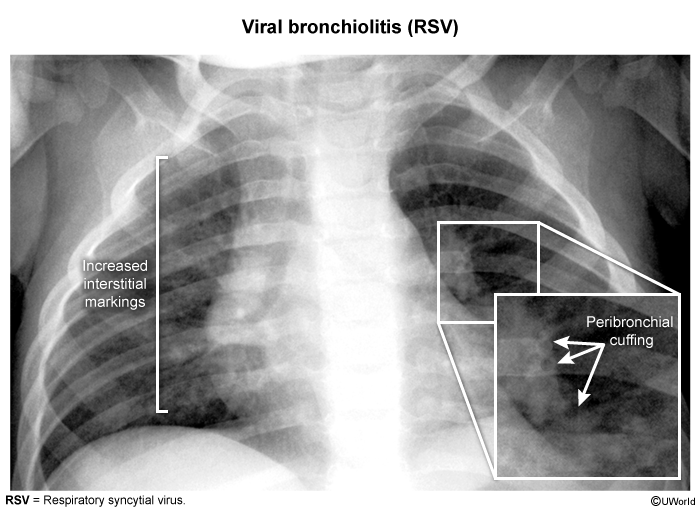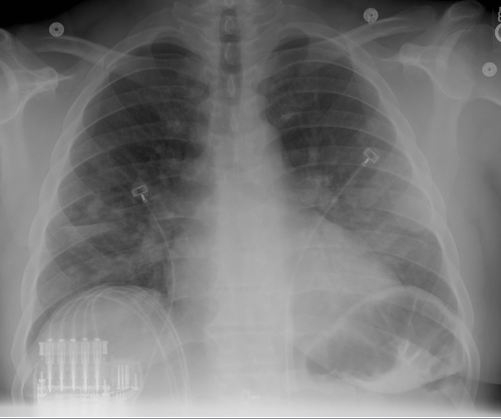Respiratory Syncytial Virus (RSV)
Article Sections
Introduction
Respiratory syncytial virus (RSV) is a major cause of lower respiratory tract infections across all age groups worldwide. Nearly all children experience an RSV infection by their second birthday. Older adults (eg, age >60), individuals who are immunocompromised, and individuals with chronic cardiac and pulmonary conditions are also particularly susceptible.
Virology
RSV spreads through respiratory droplets (eg, via coughing, sneezing) and direct contact with contaminated surfaces followed by self-inoculation of the mucous membranes. The virus can remain viable on surfaces for several hours. The incubation period ranges from 2-8 days.
Life cycleThe RSV infection cycle begins when the virus attaches to the ciliated epithelial cells of the host airway using 2 surface glycoproteins:
- The F (fusion) glycoprotein facilitates viral entry by promoting fusion of the viral lipid envelope with host cell membranes.
Continue Learning with UWorld
Get the full Respiratory Syncytial Virus (RSV) article plus rich visuals, real-world cases, and in-depth insights from medical experts, all available through the UWorld Medical Library.
Images

